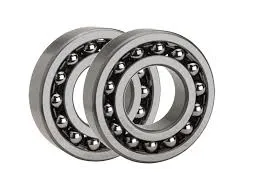
10 月 . 09, 2024 19:39 Back to list
taper roller bearing clearance
Understanding Taper Roller Bearing Clearance
Taper roller bearings are a crucial component in various mechanical systems, notably in automotive and industrial applications. Their unique design allows them to handle both radial and axial loads effectively, making them indispensable in applications where precision and efficiency are paramount. However, one of the critical factors in the performance and longevity of taper roller bearings is the correct management of bearing clearance.
Bearing clearance refers to the space between the rolling elements and the raceways within the bearing. In taper roller bearings, clearance is vital because it influences the thermal behavior, load distribution, and overall performance of the bearing. An optimal level of clearance ensures that the bearing functions smoothly, reduces friction, and minimizes wear and tear over time.
Importance of Clearance
Proper taper roller bearing clearance is crucial for several reasons
1. Load Distribution Taper roller bearings are designed to accommodate combined axial and radial loads. The correct clearance allows for an even distribution of these loads across the roller elements. Insufficient clearance might lead to uneven load distribution, resulting in premature failure of the bearing.
2. Heat Dissipation As bearings operate, they generate heat due to friction. Appropriate clearance facilitates heat dissipation. Overheating can lead to failures, which often manifest as blue discoloration or surface spalling.
3. Lubrication Adequate clearance also plays a vital role in ensuring proper lubrication. It allows the lubricant to flow freely between the raceways and rolling elements, creating a film that prevents metal-to-metal contact. Insufficient clearance can impede lubricant flow, increasing the likelihood of wear and failure.
Factors Affecting Clearance
Several factors can affect the required clearance in taper roller bearings
1. Load Conditions The type of load (static or dynamic) can influence clearance requirements. Bearings under heavier loads might require more clearance to prevent excessive contact between the rolling elements and raceways.
taper roller bearing clearance

2. Operating Temperature As temperatures rise during operation, materials expand. This thermal expansion can affect clearance. Designers often consider operating temperatures when calculating the optimal clearance.
3. Manufacturing Tolerances Variations in manufacturing can lead to discrepancies in clearance. High-quality manufacturing with precise tolerances is critical to ensuring that the bearings perform as intended.
4. Installation Practices The installation process can significantly affect the clearance. Misalignment or improper fitting can lead to variations in clearance, impacting the bearing's performance and lifespan.
Measuring and Adjusting Clearance
To achieve the desired taper roller bearing clearance, various methods can be employed
- Back-to-Back (B-B) Configuration This setup helps distribute load and adjust the clearance appropriately by placing bearings in a particular orientation relative to each other. - End Play Measurement Measuring axial play can help assess bearing clearance, providing insights into whether adjustments are necessary.
- Use of Shims Adjusting clearance can also be achieved by adding or removing shims. This method allows for precise control over the spacing between bearing components.
- Fine Tuning In some cases, fine-tuning might be needed after initial assembly, particularly in high-precision applications. This can involve iterative testing and adjustments based on actual operating conditions.
Conclusion
In conclusion, taper roller bearing clearance is a fundamental aspect that affects the overall performance and reliability of machinery. Proper clearance management ensures optimal load distribution, effective lubrication, and efficient heat dissipation. Understanding the significance of clearance and the factors influencing it can lead to better design, selection, and maintenance of taper roller bearings, ultimately resulting in longer service life, reduced downtime, and improved operational efficiency. By paying close attention to these details, engineers and technicians can ensure that their systems run smoothly and effectively.
Latest news
-
Unlocking Efficiency with Spherical Roller Bearings
NewsOct.29,2024
-
The Ultimate Guide to Thrust Ball Bearings
NewsOct.29,2024
-
The Power of Thrust Roller Bearings: Engineered for Excellence
NewsOct.29,2024
-
The Power of Deep Groove Ball Bearings for Your Application Needs!
NewsOct.29,2024
-
The Power and Performance of Cylindrical Roller Bearings
NewsOct.29,2024
-
High-Quality Ball Bearing Manufacturing Machines
NewsOct.29,2024
